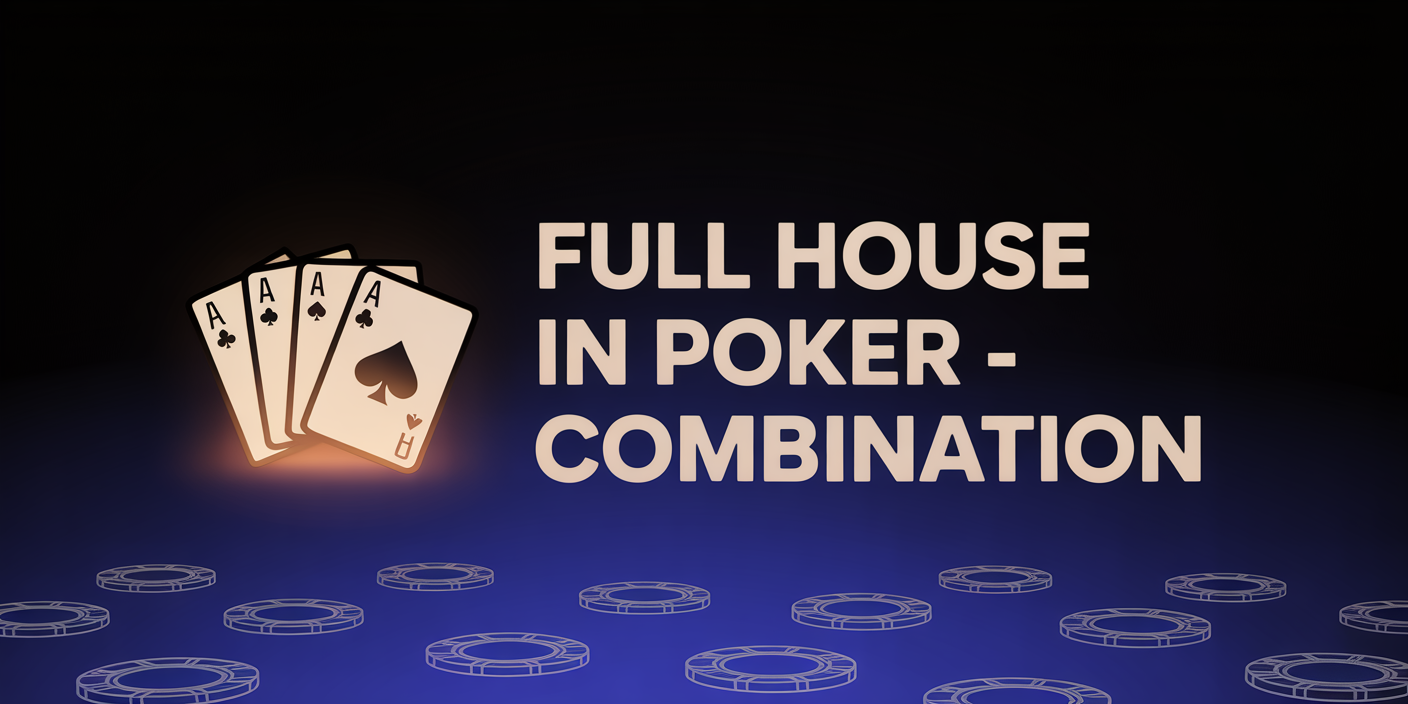Full House in Poker - Combination

Simply put, a Full House is a combination of a Three-of-a-Kind and a Pair, that is, three cards of one (same) rank and two cards of another (same) rank.
What you need to know is that the focus of this mix is the Three-of-a-Kind, and therefore when a player has, for example, Ten, Ten, Ten + Jack and Jack, you are meant to say: "Full House of Jacks and Tens," and it would be incorrect to say "Full House of Tens and Jacks."
If you're playing poker through online poker apps , you might encounter this combination often. Full House is one of the strongest combinations you can get.
Strength of the Full House Combination in Poker
As we already mentioned, Full House is one of the strongest combinations. Four-of-a-Kind and Straight Flush are the only stronger combinations than it.
If two players are given a Full House, the hand value is determined by the rank of the Three-of-a-Kind. Let's look at an example:
A Full House of Jacks and Kings (JJJKK) is weaker than a Full House of Queens and Tens (QQQTT) because Queens are higher-ranking than Jacks.
In the special case when the Three-of-a-Kind of Full House is of the same denomination, then the deciding point is the Pair. For instance, Ace, Ace, Ace + Jack, Jack defeats Ace, Ace, Ace + Ten, Ten.
If the boards are the same in structure—each player has the same Pair, and the table has a common Three-of-a-Kind (Set)—they evenly split the pot.
The ultimate Full House in poker is viewed as a collection of three Aces and two Kings—AAAKK.
Probability of Winning a Full House in Poker
Let us move on to some statistics and determine the chance of getting a Full House based on various scenarios and at what points in the game. Let's do that by taking an example of the most popular variation of poker played these days—Texas Hold'em.
If you have a Pair, then the odds of hitting a Full House on the flop are one percent.
If the initial hand consists of cards with distinct ranks, the odds of creating a Full House on the flop decrease to 0.1 percent.
If you do hold a Three-of-a-Kind (Set) on the flop, you will improve to a Full House on the Turn 13 percent of the time and 30 percent of the time on the River (poker's final street).
With a Three-of-a-Kind (Set) on the Turn, you will improve to a Full House on the River 19.5 percent of the time.
If two Pairs (one pocket pair and one on the board, for example) are drawn on the flop, the possibility of improving to a Full House on the Turn is less than nine percent—exactly 8.5 percent. However, by the River, it is 16.5 percent.
If two Pairs are drawn only on the Turn, the possibility of making a Full House is nine percent.
In short, let us briefly recap the material: a Full House in poker is an uncommon and therefore extremely strong hand—it is one of the three strongest. It beats all other hands except Four-of-a-Kind and Straight Flush. If you were thinking of a Royal Flush, observe that it's not a separate hand, but the royal version (up to Ace) of a Straight Flush.
A Full House consists of five cards, no kicker because the combination is complete. It is a Set or Three-of-a-Kind of the same rank cards and a Pair of the same rank cards.
The hand's strength is determined by the ranking of the Three-of-a-Kind (Set). If the Three-of-a-Kinds are equal, the strength depends on the rank of the Pair. In the extremely rare case when two players have identical hands, the pot is split equally between them.
This combination is popular with top professional poker players—it not only gives the player favorable chances to win but also requires careful, considerate decision-making and particular attention to the other players since they could very well have the same combination with superior cards, and their Three-of-a-Kind may rank higher than yours.
By understanding your opponent's play pattern and tendencies, you can decide more wisely between folding or playing all-in if you are certain that your opponent bluffs way too much. Like in a lot of instances, remain attuned to table dynamics, study more, and don't play on impulse.


